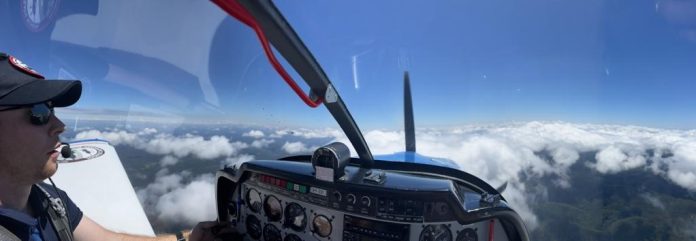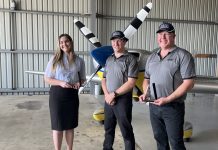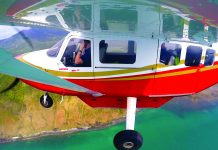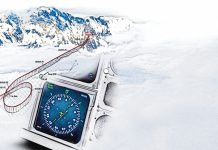The best in general aviation and airline flying have important operational lessons for each other.
General aviation (GA) and airline transport represent opposite ends of a spectrum. About the only thing they have in common is crisply pressed white shirts, that and a certain attitude.
General aviation is a world of small, sometimes old, aircraft, many of which, along with their pilots, are qualified to operate only in day VFR. Versatility, variety and, yes, a certain vulnerability are its characteristics in business terms.
Charter operators have to be prepared to fly anywhere at short notice and margins, as anyone in the industry will tell you, are thin. The airline world by contrast is a place of predictable routes, well defined roles and established hierarchies. Its operators fly aircraft weighing up to hundreds of tonnes, routinely by IFR, and use levels of automation and flight planning support that are beyond the dreams of general aviation.
Margins are tight here too but the sheer volume of money flowing across the business allows for type-specific Level D simulators which, combined with the safety imperative of flying hundreds of people round at a time, creates a situation of near-constant retraining. Weather is a limit for airline operation too, but its large aircraft routinely take-off and land in conditions that would blow most general aviation types into the next jurisdiction.
But excellence exists at both ends of this spectrum. And, surprisingly, each end has useful lessons for the other. Chief instructor at Bankstown Airport’s Aerobatic School, Joel Haski, and international airline pilot, Lars Larson, made this clear in a discussion with Flight Safety Australia. Their arguments boil down to three principles.
- Self-discipline: how good are you?
Airlines are a multi-crew environment working together to achieve a common result. An airline pilot’s role is structured, with known parameters and currency training a regular component, ensuring a high standard of skill and safety. The best try to exceed even this standard. Larson has never forgotten his first encounter with this stringent professionalism.
‘Years ago, I was flying as the first officer on a commuter airline,’ Larson says. ‘We didn’t have autopilot, and I was hand flying at 15,040 feet and holding it nicely at that exact altitude. Then, the captain turned to me and says: “You’re at 15,040 feet, and I don’t mind, but you could just fly it at the correct altitude [15,000 feet]. But, if you’re happy to be 40 feet above, that’s as good as you’ll ever be”.
‘From that day, I’ve tried harder. Because how good you want to be is up to you. It’s a mindset that’s transferrable into everything in life, not just aviation. And that type of precision and flying discipline is something that formation flying and aerobatic training can teach pilots.’
So, how good are you? And how good could you be with some self-discipline?
- Standards: more than just procedure
Whether you’re carrying one or one hundred passengers, each should feel safe and confident in your hands. The professionalism that airlines instill into their pilots is a goal for general aviation pilots to aspire to.
‘As airline pilots, we’re constantly evaluating ourselves and modifying our decisions. GA teaches you the foundational procedures, but the airlines teach you how to excel at those,’ Larson says.
Haski agrees. ‘GA pilots can learn to be more disciplined procedurally and bring a higher standard of professionalism to the table, regardless of the level they’re flying. It’s something the airlines do really well.’
Because, no matter the type of pilot you are or the licence you hold, the responsibility awarded to you, especially when carrying passengers, is great – committing oneself to a level of excellence means everyone wins.
Most pilots in GA don’t have someone regulating performance outside a biennial licence review or that 90-day flight check. This means skillsets can easily be forgotten if you’re not monitoring your performance, flying regularly and practising essential procedures.
‘If you don’t practise for a month or two, you’re going to be a bit rusty,’ Haski says.
Not to mention, how much you trust in your skillsets, ability and training is reflected in how confidently you relate to your passengers and fly the aeroplane.
- Stick & rudder: use it or lose it
‘In my experience, I’ve found the stick and rudder skills of GA pilots are very good because they’re flying these machines by hand a lot,’ Larson, who is also a GA flight instructor, LAME and aircraft owner, says. ‘In the airlines, there’s a lot more automation in the cockpit. And depending on what you’re flying, there’s less stick and rudder time, plus pilots sharing the legs results in reduced time on the controls‘So, if in the role for several years, they tend to lose basic skills like attitude maintenance. Some pilots I work with return to GA with complete reliance on instruments despite a perfectly clear day outside.’
Haski says the other perishable skill is workload management. ‘Airline pilots go from a multi-crew situation where the workload is split, to a single-pilot operation,’ he says. ‘Now they’re responsible for flying the aeroplane, managing the radio, dealing with airspace, loading bags, passengers, fuel planning and more. And sometimes there’s a slight transition period to refresh those skills.’
So, regardless of what you fly and the type of pilot you are, basic stick and rudder skills, and more advanced skills like aerobatics, upset prevention and recovery training (UPRT) or formation flying, directly crossover to airline flying. These skills translate beautifully to flight planning, teamwork and being comfortable in all sorts of unusual situations and attitudes. Being able to operate a light aeroplane in a busy environment such as Bankstown, Moorabbin or Archerfield, to a professional standard, can only be beneficial when you’re in the cockpit with someone else.
Simulators, whether immersive multimillion dollar airline devices or personal computer-based, have much to offer but Larson and Haski say nothing compares to properly supervised training in an actual aircraft.
Larson says: ‘A simulator won’t do less than 1G’. Haski says: ‘Unless a pilot is exposed and becomes comfortable with less than 1G when recovering from an upset situation, experiencing it in a real situation may cause them to choke.
‘A sim can’t provide that visceral and physical experience you get when recovering from unusual attitudes or getting inverted in a light aircraft.’ It’s why he avidly advocates practising upset prevention and recovery techniques in a real aeroplane.
‘Training in-flight acclimatises pilots to the physical sensations, adrenaline and forces that come into play when executing recovery in the sky,’ Haski says. ‘It also prepares the pilot better to manage the stress of a real-life emergency. Now, no-one knows how they’ll react in an emergency until that moment, but with adequate preparation and training, you’ve got a toolkit that may just save your life.’






Flying 40 feet, above or below the flight planned level is really not a bad idea. Forty feet is sufficient to miss a crossing aircraft flying at an even thousand feet or 40 feet below it. Likewise keeping slightly left or right of a GPS track between two popular airports. With being both off-track and off-altitude gives a better chance of avoiding other aircraft. ATC transponders allow an aircraft to be +/- 200 feet off their assigned level. A 100 metres off track, left or right, hardly registers on radar screens due track smoothing.
If you think this applies to light aircraft, it works wells with commercial aircraft at flight levels much higher.
If it were possible to be precisely on track and precisely at a 1,000 ft altitude/FL the probability of mid-air incidents would be greater than currently.
All very true and logical at the same time!
Ah – the navigation paradox:
https://en.wikipedia.org/wiki/Navigation_paradox
I would hope that that the pilot HAND flying an aircraft to maintain his / her altitude / FL of 15000’ , with 40 feet above or below being unacceptable enroute , has enough situational awareness and skill to “fly the rest of the aircraft tasks “ .
Imagine a long flight , workload , turbulent weather , single pilot flight , passenger issues etc etc
I am not suggesting let’s just throw out finer detail , but is this example a bit of a “ big ask “ ..
My thoughts folks ..
ShaneO